How to Turn Off Pop-Up Blocker on Chrome [PC & Mobile]
Pop-up blocker is like a shield against those sudden windows that interrupt your internet browsing. This guide will help you understand its function and how to turn off the pop-up blocker on Chrome. Whether you’re using a computer, Android, or iPhone/iPad, it has you covered for a hassle-free online experience.
Table of Contents

What a Pop-Up Blocker Does
A pop-up blocker is a feature within your web browser that prevents sudden windows, known as pop-ups, from appearing when you’re browsing the internet. It prevents intrusive content, like ads, from disrupting your screen, improving the user experience.
READ MORE: How to Protect & Hide Your Browser Fingerprint ➜
↪ Why Would You Want to Disable Pop-Up Blocker on Chrome
Turning off the pop-up blocker on Chrome might be necessary when accessing certain websites or services that legitimately use pop-ups for essential functions, like:
- Websites with legitimate pop-ups for essential functions (e.g., online payment gateways or specific content delivery systems).
- Troubleshoot website issues that the pop-up blocker may cause.
- Some interactive tools or validated pop-ups on specific sites might necessitate turning off the blocker for proper functionality.
- Certain functionalities or features of websites might necessitate temporarily disabling the blocker to work as intended.
How to Turn Off Pop-Up Blocker on Chrome
Disabling the pop-up blocker on Chrome is a straightforward process across different devices. Here, we will tell you about the PC, Android, and iPhone methods, so let’s get into it.
1. On PC (Windows + macOS)
Follow these steps to turn off the pop-up blocker on Chrome on your computer, whether it’s a Windows PC or macOS device:
- Go to “Google Chrome” on your PC.
- Click on the three vertical dots at the top-right corner of the screen to access “More.”

Click on More - Select “Settings.”
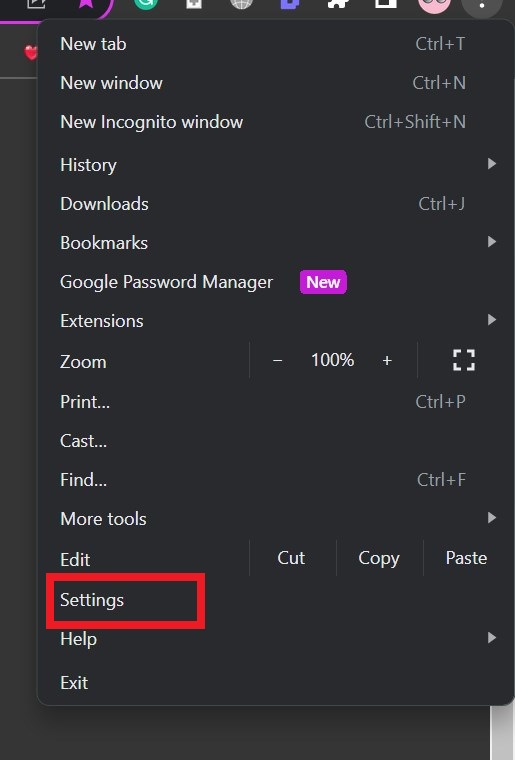
Select Settings - Navigate to “Privacy and security” > “Site settings.”
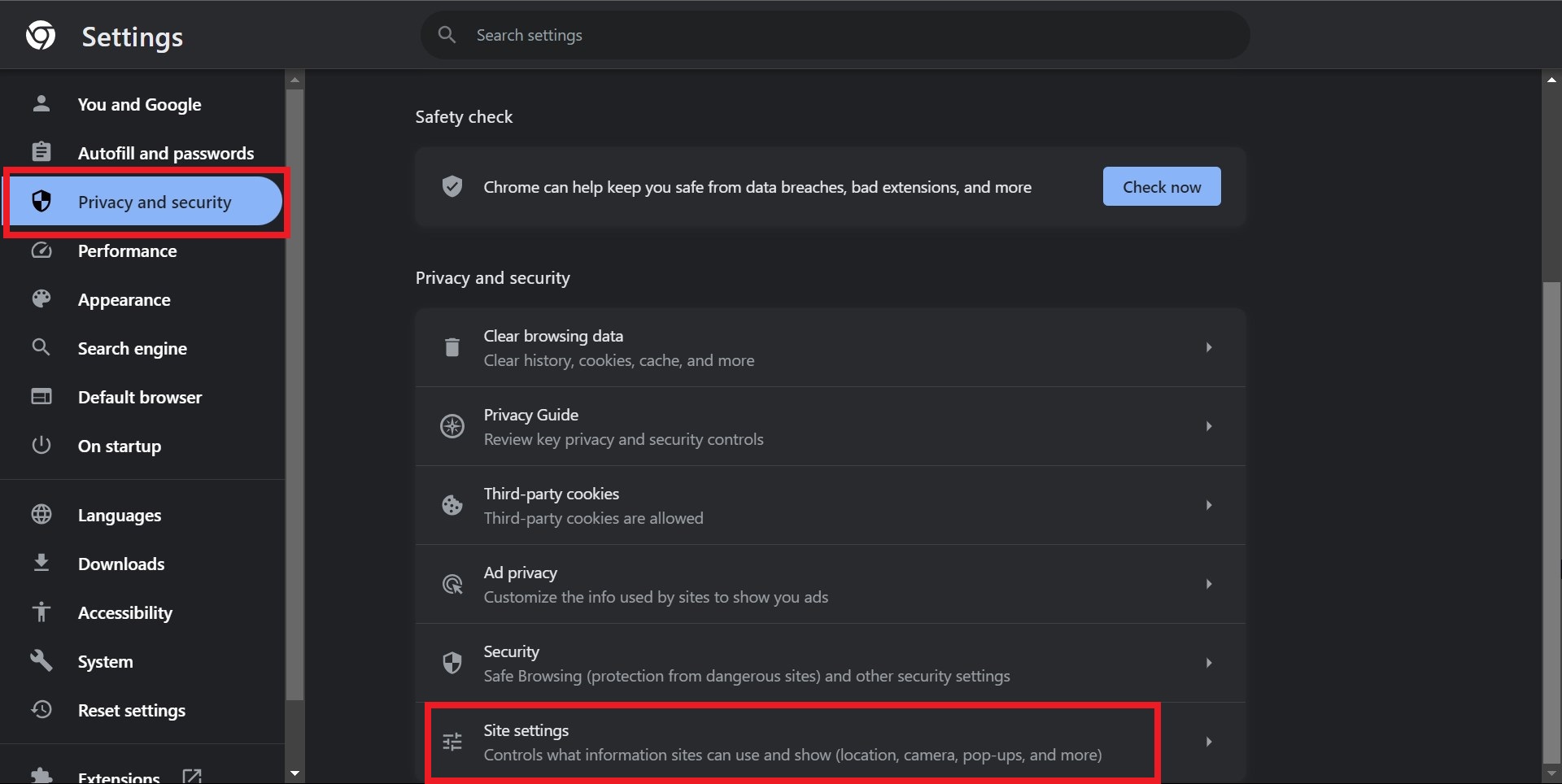
Privacy and security > Site settings - Then, choose “Pop-ups and redirects.”
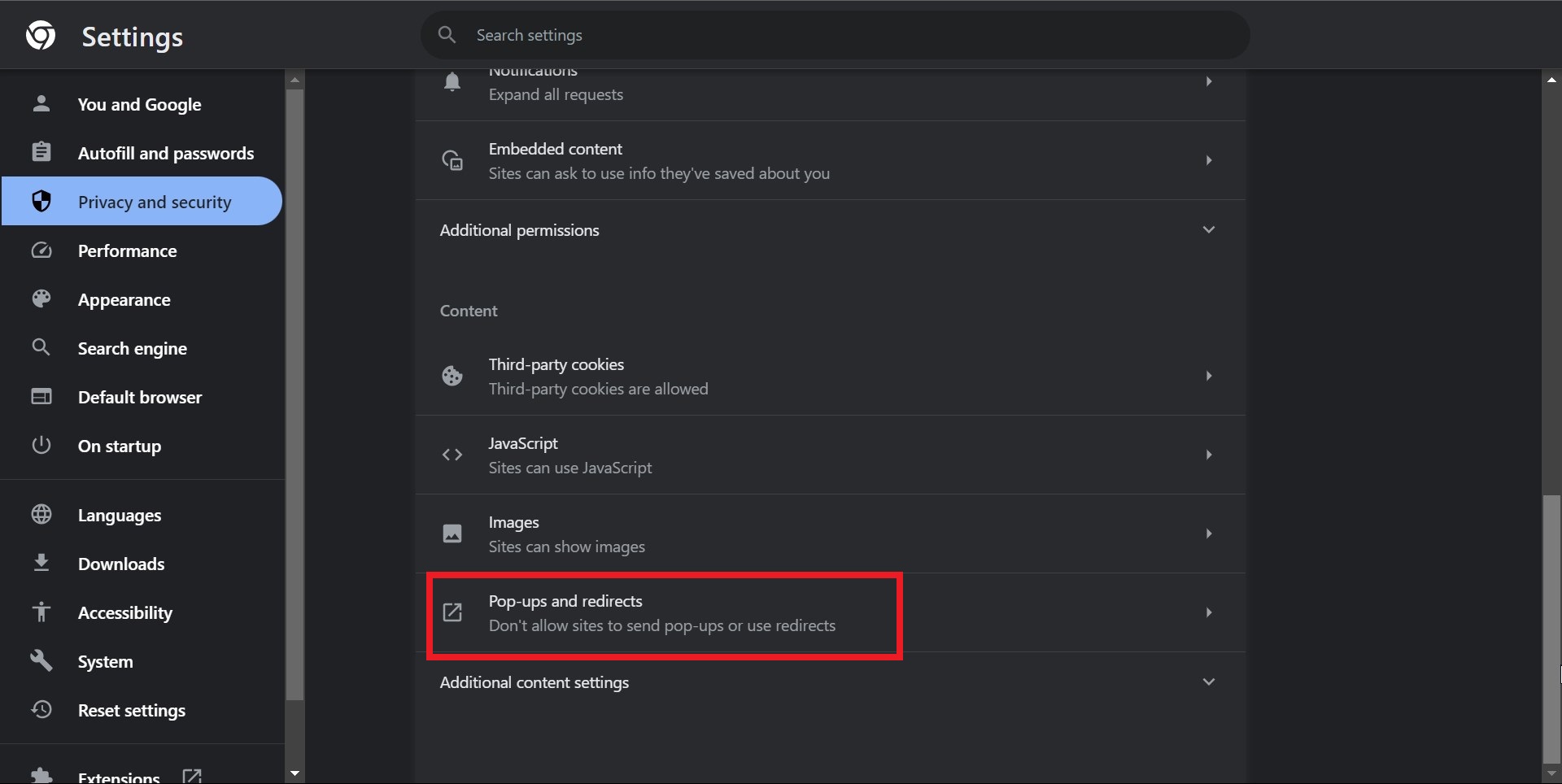
Select Pop-ups and redirects - Click on “Sites can send pop-ups and use redirects” to disable the pop-up blocker.
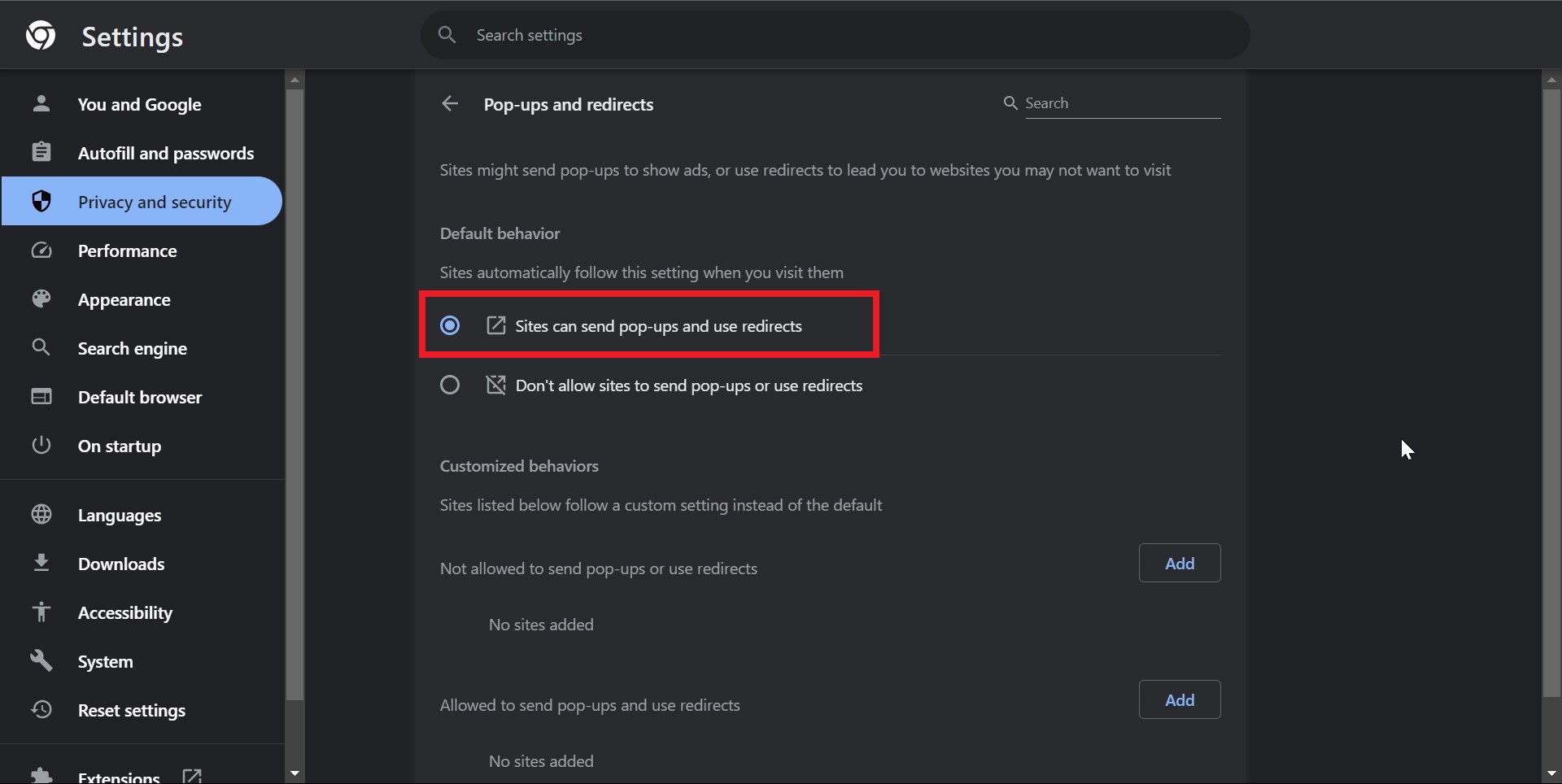
Select Sites can send pop-ups and use redirects
2. On Android
Here’s how you can turn off the pop-up blocker on an Android device’s Chrome:
- Open Google Chrome on your device.
- Tap on the three-dot icon in the corner and select “Settings.”
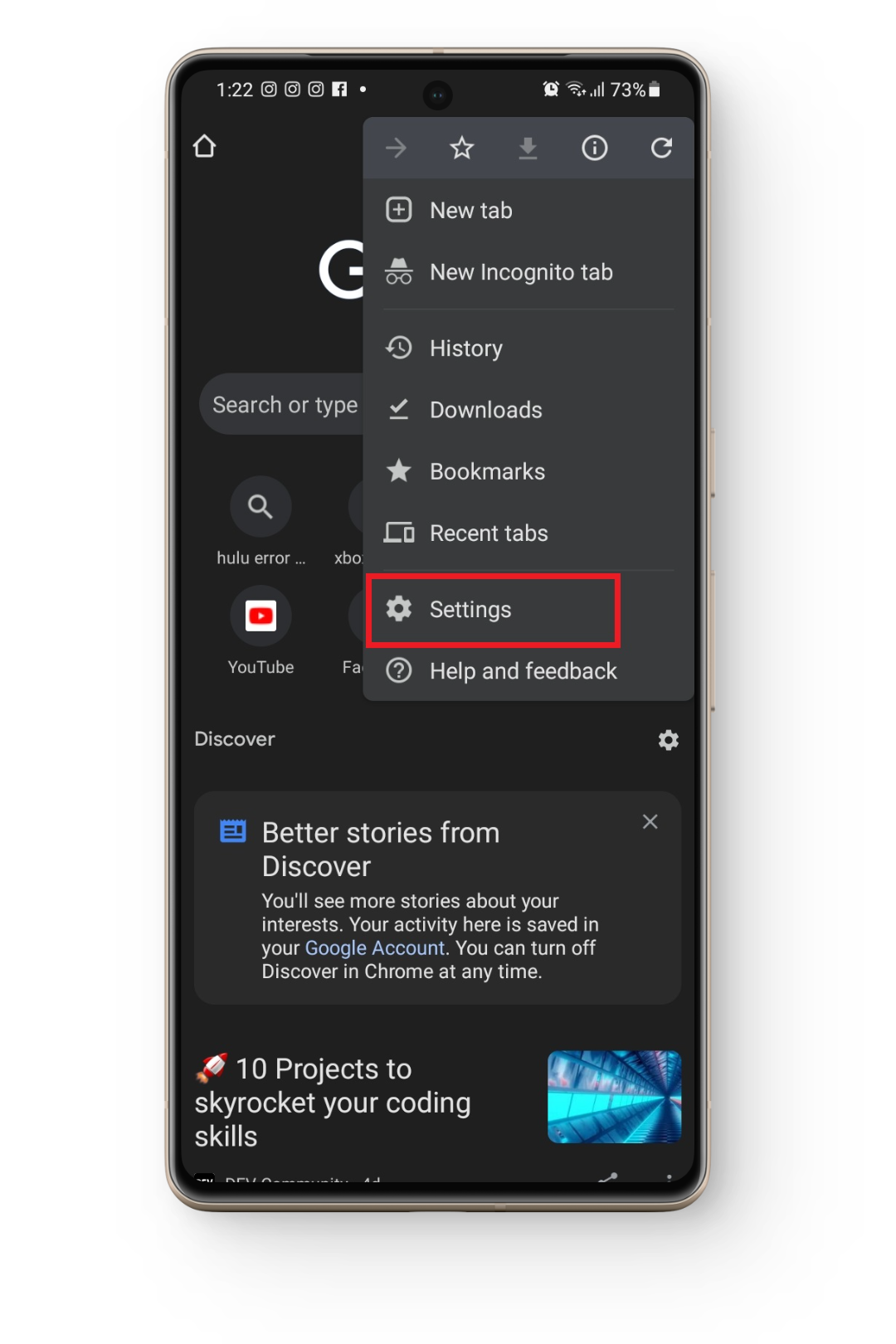
Tap on Settings - Go to “Site Settings” > “Pop-ups and redirects.”
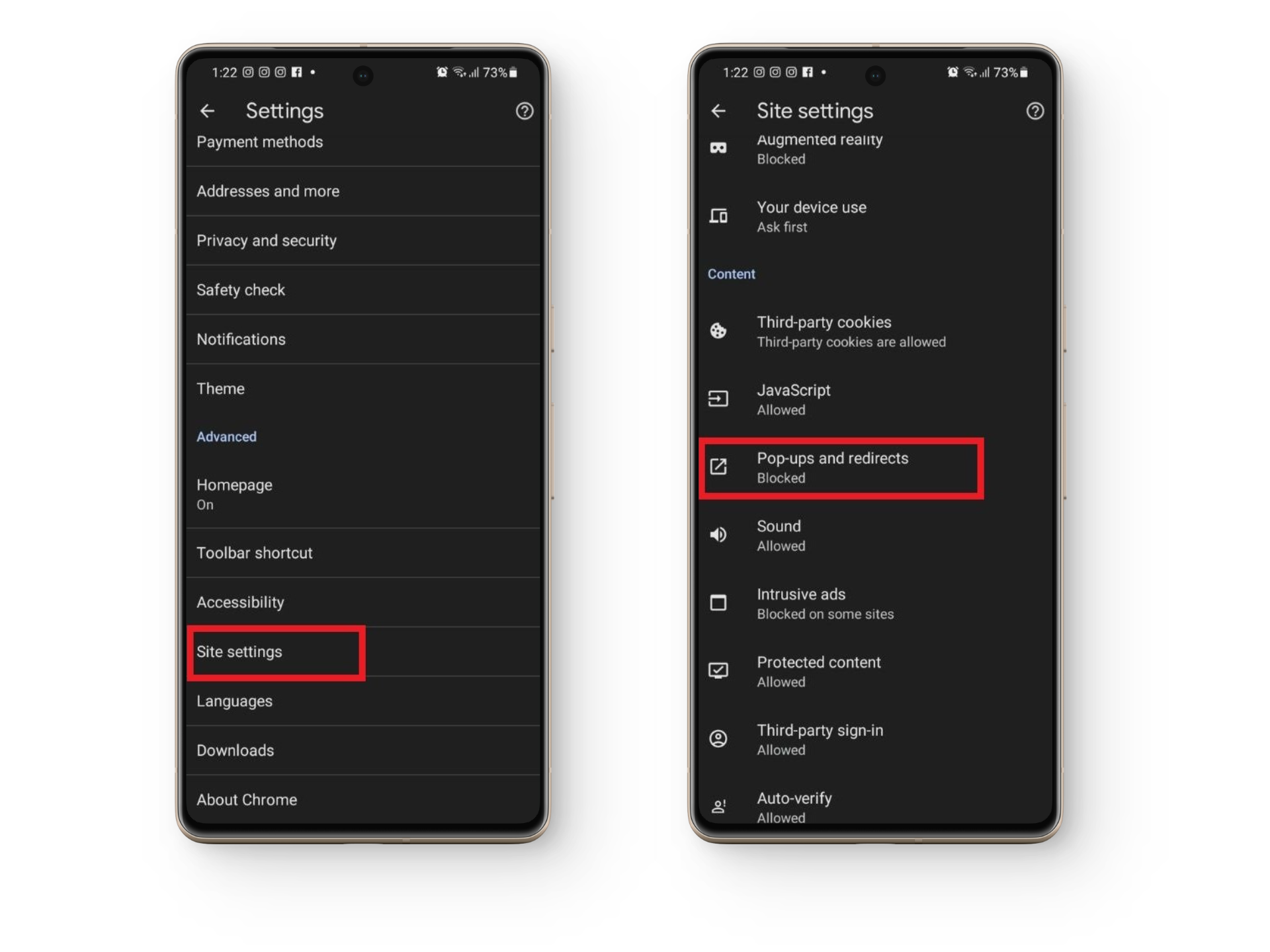
Go to Site settings & select Pop-ups and redirects - Now, toggle the button to enable pop-ups.

Enable the pop-ups toggle
3. On iPhone/iPad
In an iOS device, the pop-blocker can be turned off using the following process on Chrome:
- Open “Google Chrome.”
- Tap on the three horizontal dots (…) “More” and select “Settings.”
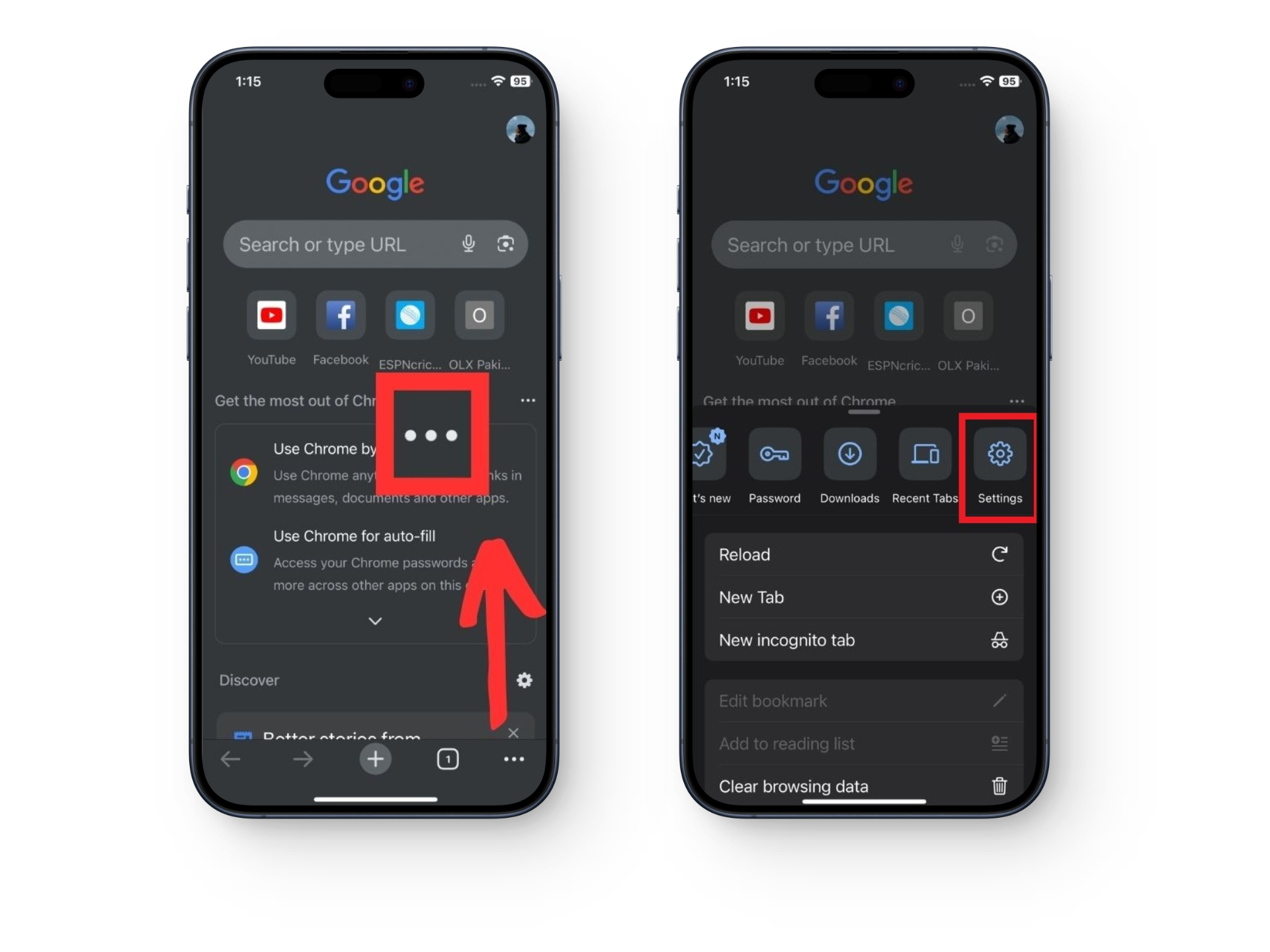
Tap the three-dot icon and select Settings - Tap on “Content Settings.”
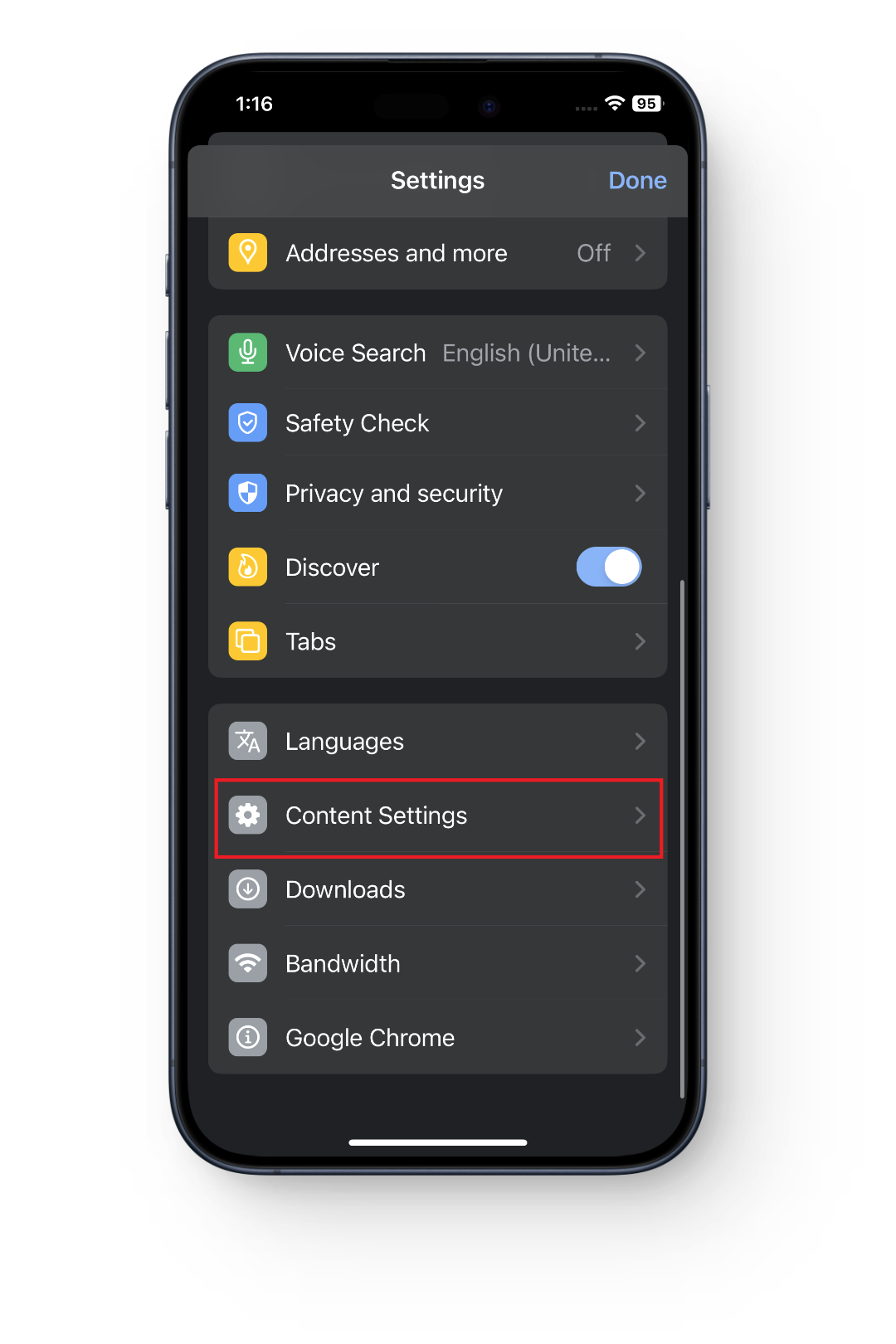
Select Content Settings - Now, select “Block Pop-ups” and toggle the button to turn it off.
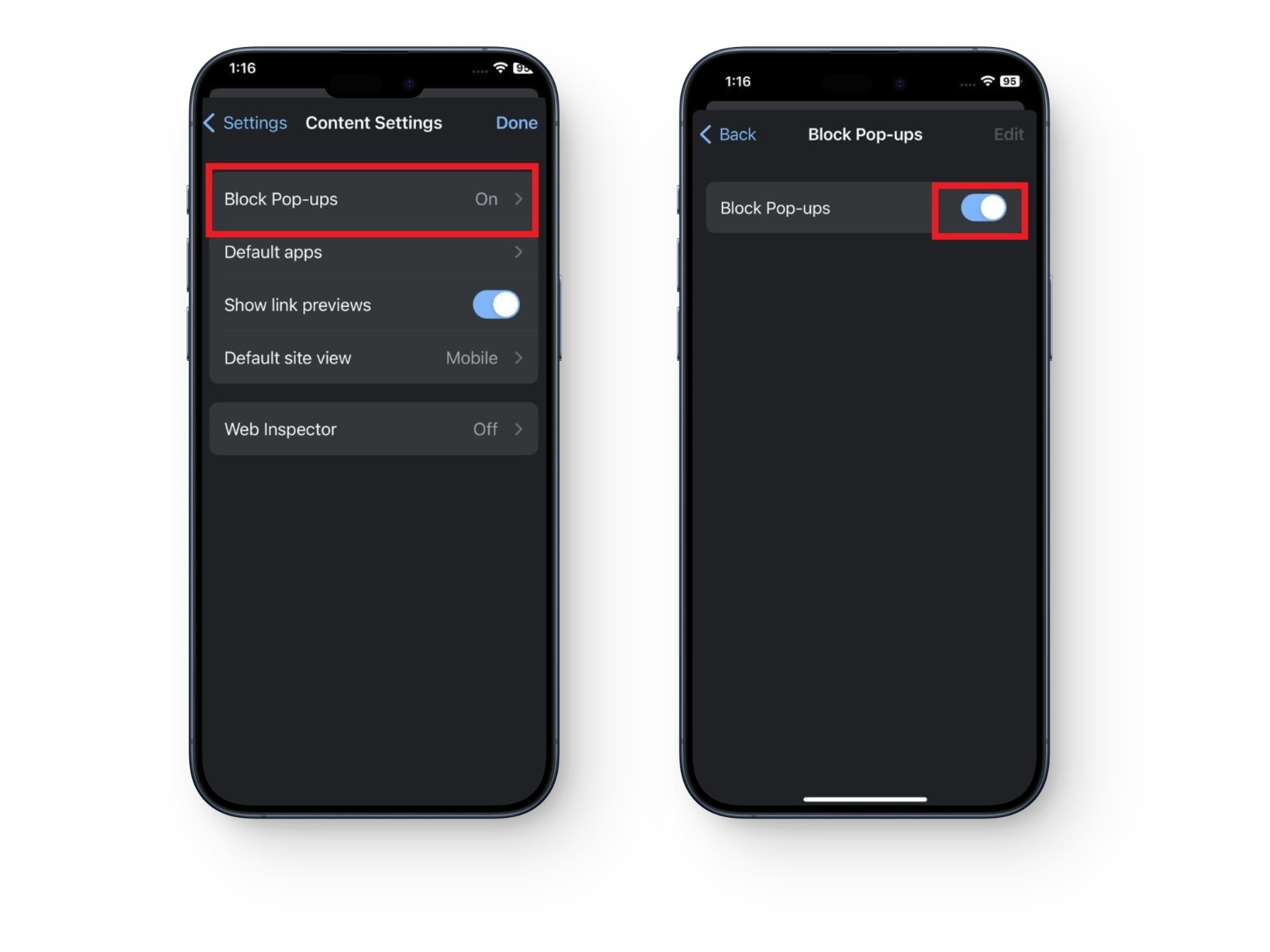
Alternative to Turning Off the Pop-Up Blocker
Instead of completely turning off the pop-up blocker, consider allowing exceptions for trusted sites on your PC. Simply follow the same steps as above but change one last detail.
Here’s how you can do that:
- Navigate to “Settings” > “Privacy and security” > “Site settings“
- Now select “Pop-ups and redirects.”
- Under Customized behaviors, click on “Add” beside Allowed to send pop-ups and use redirects.
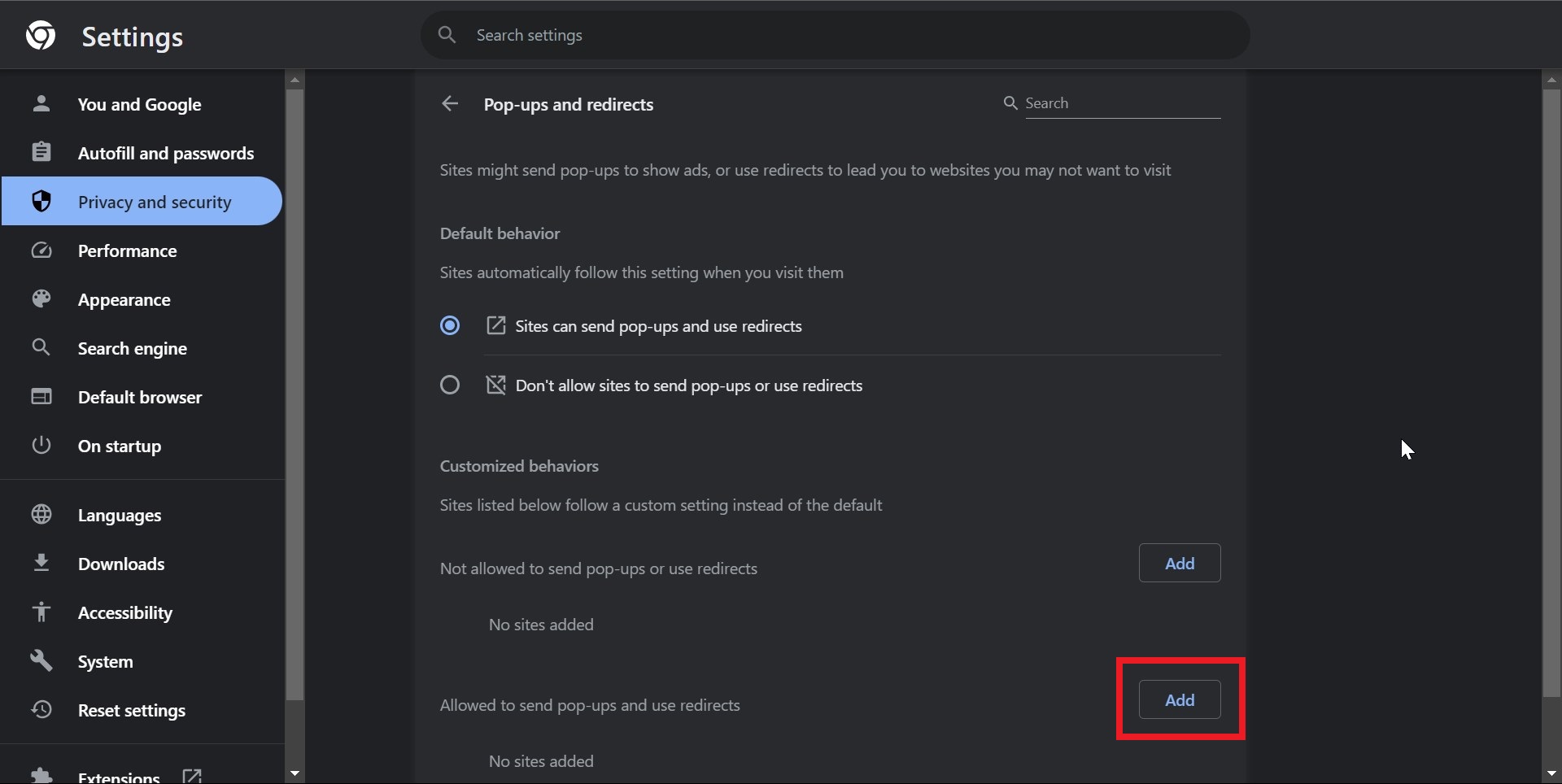
Add any and all websites that you want the Chrome pop-up blocker to ignore here.
Wrapping Up
And that’s it! Learning how to handle those pop-up blockers makes browsing easier and keeps things safer online. Whether you’re on a computer or using an Android or iPhone/iPad, knowing when to adjust those settings or allow pop-ups can really help.
Finding that balance between easy access and safety by trying other ways or allowing pop-ups on trusted sites keeps your online experience smooth. It’s about managing those interruptions while staying safe, making your online adventures much more pleasant.
FAQs
Pop-ups that are blocked usually prompt a notification or a symbol in the address bar of your browser. This indicator varies among different browsers but typically alerts you when a pop-up has been prevented.
Pop-up blockers generally target intrusive pop-ups, such as those with advertisements or unsolicited content. However, legitimate pop-ups from secure or trusted sources might still be affected.
While pop-up blockers can help in minimizing exposure to potentially harmful content, they are not foolproof against malware or viruses. It’s essential to have proper antivirus software and maintain cautious browsing habits for robust protection.
Utilizing ad-blockers or extensions specifically designed to manage pop-ups can also help in preventing unwanted interruptions during browsing.





